[William Gresens, Emeritus Grants Officer, University of Wisconsin-LaCrosse]
Well, as Kathy mentioned I have been doing these reviews for about 15 years and one of the really delightful things about doing it is that every once in a while, I’ll be able to come upon, discover, a new author. And about 13 years ago I was fortunate enough to come across Mary Anna’s first “Faye Longchamp” novel, and basically fell in love with it at – at first sight. I’ve reviewed, I believe, about nine of ’em now, and it is my pleasure, really, to introduce her this evening.
I should also mention that the “Faye Longchamp” mysteries have been awarded several literary awards over the years including the Benjamin Franklin Award, Mississippi Author Award, and three book awards from the state of Florida.
Mary Anna is an Assistant Professor of Professional Writing at the University of Oklahoma in Norman, where she teaches both Fiction and Non-Fiction Writing. Mary Anna earned a Master of Fine Arts in Creative Writing from Rutgers-Camden quite recently, but before that earned a Bachelor of Science in Engineering Physics and a Master of Science in Chemical Engineering, areas that I know absolutely nothing about and am just sort of blown over by people who are expert in – in those sorts of fields. She is still licensed to practice engineering in the state of Florida. She’s also the co-author of scholarly articles and a book on mathematical literacy and she’s co-authored an environmental engineering continuing education course. In 2016 she published two essays on environmental topics, and she developed and taught a course on writing environmental essays. And possibly most importantly for our purposes this evening, she is currently working on her tenth “Faye Longchamp” archaeology mystery, which I believe you said may be coming out about next February of 2017. I’m obviously looking forward to that. Please welcome Mary Anna Evans.
[applause]
[Mary Anna Evans, Assistant Professor, Department of Professional Writing, University of Oklahoma]
Thank you. I’m so pleased to be here.
Very honored to speak to a group, I think, of probably mostly archaeologists. I’m as he said an engineer and a writer. And I blundered into, in the middle of my career, a sub-field of math and science literacy when I met a professor of young adult literacy and we felt like all of our expertise came together in a special synergy. And those – that encounter ended up with a couple of peer-reviewed articles on math and science literacy and a book that we co-wrote called “Mathematical Literacy in the Middle and Secondary Grades.”
In the course of writing these things we realized that teachers are being required by No Child Left Behind to bring writing into the math and science classroom, math and science into the writing classrooms, but nobody really tells them how to do that. And at the time we wrote the book there wasn’t anything really out there like it. So, in order to feel our way into this fairly new field for both of us, it was an interesting process that I took a step back to say, Well how do I do what I do and how does it draw from my background in the sciences? And I – I have to tell you that every day I come up with a – a new way that my work in the arts draws from my education in the sciences. And I – and I enjoy that synergy and I would like to foster it.
So, the topic at hand is particularly about my books, which are based in archaeology. And there is a – a very thriving sub-field in archaeological crime fiction that is about –
[slide titled, Archeology often serves as a backdrop for mystery novels and crime fiction. Why, with the bullet points that – the Indiana Jones effect cannot be denied, there is an alure to the treasure hunt, and archeology gives the protagonist an excise to be digging up trouble, namely dead bodies]
– well, in crime fiction, that is about archaeology, and which is interesting when you think about it. And so, you know, to prepare for this talk I asked myself why. Why are there so many mysteries about archaeology? And so, you know, you have to just out of the gate say the Indiana Jones effect cannot be denied. You know, people like Indiana Jones. They like the romance of it all. They like the – the swashbuckling nature that is probably not the way it really is to be an archaeologist, but it’s fun. So, there’s the fun aspect of it.
I think for all archaeological fiction –
[Mary Anna Evans, on-cam]
– but especially crime fiction, there’s an allure to the treasure hunt. We – we read mysteries because of that unknown that sucks you in and you want to know the answer, and archaeologists just adds another layer to that, of, you know, what are you gonna find when you dig? What – what are you gonna find in the bowels of that museum? So, I think there’s just the treasure hunt aspect.
And then from my point of view as the writer, something that has become more and more clear to me over the years is that archaeology gives my heroine a reason to be out lookin’ for trouble. When you write a series of mystery novels, at some point someone might ask why does your interior designer keep stumbling over dead bodies?
[laughter]
You know, it doesn’t happen to most of us all the time. Archaeologists are out looking for things and sometimes those things are dead bodies. So, it means that it’s just a little more plausible. My stories are a little bit more rooted in the real world, and my heroine has an excuse to be doing what she’s doing.
I was naive when I started writing. I didn’t even realize that mystery readers expected a series, so I wrote the first book all out. Gave it my all and thought that was it. And when the publisher, that first book got a couple of awards, it did well, and the publisher says, “You wanna do another one?” and I go, “Sure, um.” And the idea did come to me, but part of the reason that I’ve been able to have a long series is because my archaeologist is a deep and interesting character who’s out lookin’ for trouble, diggin’ up trouble.
And so also more broadly, not just archaeologists, but other kinds of scientists crop up again and again in fiction – fiction.
[slide titled, More broadly, science often serves as a backdrop for novels of all stripes. Why? – featuring the following points. Fiction is a tricky beast – you must get your reader to suspend disbelief. Give your story a background that speaks of realism and authenticity, and your readers will believe you]
Not just crime fiction. And when I was doing the literature course work for my Master of Fine Arts in Creative Writing, they want you to know what came before. So, we were reading classic novels from the early 20th century, and I would find extended metaphors based in science that you would not expect to find in Virginia Woolf perhaps. And I – it was Modernism. It was the time that – that science was coming to the fore, and I actually wrote a paper in graduate school about –
[Mary Anna Evans, on-cam]
– science in unexpected places in fiction. And I think it – it appeals to a certain kind of mind, a creative mind, and also I find that when I’m writing fiction, you know, it’s no secret that you have to get your readers to suspend their disbelief. You have to make them believe that your character has stumbled over the tenth dead body. And so, for me science and also history, things that are rooted in fact, I think it allows me to build a framework of a story that people can believe. They know that the physics works. They can feel it even if they don’t know physics. They know that the history feels accurate. They can go to “Google” and check it. And so, I create a world that makes some sense, and then when I get into the more fanciful parts of the story people go more easily with me, I think.
So, so now that we’ve established a link between science and fiction –
[slide titled, Now that weve established the link between science and fiction that is the topic of the talk, let me backtrack, and featuring the following point – Let me tell you how I travelled -and still travel-the parallel tracks of the discipline of science and the art of writing. I promise the tracks will converge]
– I like to think of the discipline of science and the art of writing as being the two rails of my career. And I also like to think of the discipline of writing and the art of science. I think that they – they have more in common than we understand them to – to have. And so, I want to backtrack a bit and take you through my journey to get from science to writing because it has given me a lot of insight in my work in science literacy, to see how the two have worked together for me. So, I promise that the two tracks do come together at the end, but I want to back up a little bit in time and talk about how I got to this point in the career.
So, I –
[slide featuring the quote – No education is ever wasted – which is probably not original to Irvin E. Sellers (her father), but he said it a lot. And I do mean a lot]
– have a lot of thanks for my father who spent a lot of my childhood saying, “No education is ever wasted.” I’m sure that was not original to him, but it was – it resonated for him. It resonated for me. I think that it might not have been ordinary in 1961 to start a college fund for a girl child in Mississippi, but my parents did.
[Mary Anna Evans, on-cam]
I was raised to be an educated person and a curious person. I have a lot of gratitude for that, and I think it – it brought me to both science and writing.
My mother, who also believed that no education was ever wasted, but the other aspect of her personality that was key was her curiosity. There’s a story of her when she was four years old, and she and her cousin were having quite a fight over a worm they had found because she wanted to cut it up and see how it worked –
[slide featuring the quote from Lillian E. Sellers (her mother) philosophy for finding stuff out – Look! Theres a hole/some dirt/ a worm. Lets look inside/ dig it up/ cut it open and see what we can find out]
– and he wasn’t so sure that was the best idea. And that story followed her around for the rest of her life. She became a nurse, which is what girls who were interested in science did in the 1950s. And so, I was brought up with a woman who was gonna find out how somethin’ worked, so, which is the very root of science.
[Mary Anna Evans, on-cam]
And so, this is my childhood. A basis in education. Curiosity –
[slide featuring three words in rectangles with double-sided arrows pointing between all three, they are Education, Curiosity, and Practicality. Also noted is that this was her childhood – if this is not a formula for synthesizing a scientist or a writer, then I dont know what is]
– was an important factor. And then an innate practicality which led me, you know, directly to science, but it also led me to writing. And I don’t – I dont know what, that’s a recipe for both of those things to me, and I find them very important.
[new slide featuring a black and white photo of members of a logging company standing in front of a large crane which is on railroad tracks. The photo is titled, Sometime before World War I]
And also, a reverence for history came into play. This picture was taken somewhere in the American South, sometime before the First World War because the long leaf pine forest in the American South was flattened before the end of the First World War. It was gone by 1917. So, the destruction of a forest that reached from Virginia to Texas was a notable fact. These – they had the tim – the portable vehicles to – to flatten the forest. They built the temporary rail lines that you can see. They built temporary sawmills, they – and then once the trees were gone they packed it all up and moved to the next patch of trees. I grew up on the site –
[Mary Anna Evans, on-cam]
– of one of those sawmills. You would’ve thought that after 50 years there’d be nothing left, and this is where we get into the archaeology part. There was quite a bit of remnants of that sawmill. There was a huge pile of sawdust at the bottom of the hill. There – there was a – there were logging roads through the woods, and they were still paved with half timbers. And there was a strip of grass where the – a strip where the grass wouldn’t grow where the rail lines, the temporary spurs had been. And so about 50 years later sometime during the Vietnam War –
[slide featuring a photo of a young Mary Anna with her sister and parents standing in front of their home in the late 1960s. The photo is titled, Sometime during the Vietnam War]
– we bought that house. That’s me in the knee socks. The strip of land where the grass didn’t grow is just on the other side of the driveway and the logging roads went back into the trees. You can – the trees came back pretty well in 50 years.
There was a house on the site in between that apparently the people watched the trees grow. So, the archaeology part of all that is my mother found the trash pit and the privy for the – the –
[slide featuring the following recollection – And, in between the sawmill and the Vietnam-era house, there was another house, where I suppose people watched the trees grow. My mother excavated the outhouse and the trash pit for the house and walked the paths of the railroad spurs and logging roads. She walked it all again after Hurricane Camille stirred things up. Imagine what she found. Now imagine why I write about archaeology]
– sawmill and the house and she excavated them. And she – I still have some of the things she – she dug up. They’re – theyre family treasures. She walked those old roads and, you know, found debris thrown here and there. She walked the old rail line. She found the gravel pits in the woods that they had used to build the roads. In the gravel pits she found what she was pretty sure, we never had an expert look at it, but she was pretty sure she’d found the remnants of flint knapping. She found finished points. She found –
[Mary Anna Evans, on-cam]
-things that she thought were probably points that didn’t quite make it. They weren’t quite good enough. And the – and the raw material, the flint.
And so, and then after Hurricane Camille came through in 1969 and stirred all that up, she walked it again. And I remember walking behind her through the woods. And I’m not a finder. I gave that gift to my character Faye Longchamp in my books. My mother was finder. And so, I walked right past a downed tree with the root ball almost as tall as I was. My mother walked along behind me and picked up a spear point that was laying right on top. I have that, too. So, you know, is it any wonder that I write about archaeology? I had her and we went to the book mobile every summer and got all the books about archaeology. And I tell my writing students that when you live your life, you’re putting creative material into a well, and it will be there when you reach in and need something to write about. I teach in a writing program. I think writing programs are valuable, but I tell them that that’s not all of their education or else they’ll only write about writers. And so, thanks to my mother I had enough grounding in, at least a fascination in archaeology that I could go to experts. I could go to written material and craft stories that at least make some degree of sense about archaeology.
The first book got an award from the Florida Historical Society, which scared me to death because I’m going, “Don’t they know I made it up?” And they did. They give one award for fiction, and I was very honored to receive it.
So, during all this time Daddy would periodically say –
[slide featuring the recollection – And periodically Daddy would intone – say it with me – no education is ever wasted]
– and you can join with me, “No education is ever wasted.” Especially when you’re a writer, you know. It has to –
[Mary Anna Evans, on-cam]
– you gotta have something to draw from. So, I took him seriously. You know, I was a little nerdy, I guess. You know, I was into English, obviously. Math –
[slide featuring the recollection – I took him seriously, English, math, band, piano, physics, biology, (not chemistry), earth science, art, mechanical drawing But we are practical people. Thus, engineering]
– band, physics. The piano. Not chemistry because the chemistry teacher was known to think girls were stupid. My sister and I both avoided him. I have a Master’s in Chemical Engineering. She has a PhD in Analytical Chemistry. He knows this.
[laughter]
Mechanical drawing, all of it. I might have enjoyed majoring in piano, but we’re practical people and engineering seemed like a good way to put food on the table –
[Mary Anna Evans, on-cam]
– when I needed to, and I have. And I loved it. It’s like solving puzzles every day. You know, you – it’s like figuring out the way the world works. And so, I enjoyed my class work a great deal and I enjoyed the experiences it brought me. And those of you who may have read the books will start to see where I’m going with this because you’ll start to see things that crop up in the books.
But the –
[slide titled, Women Engineering, Ole Miss, 1979, and the phrase – it was an interesting time]
– one thing that was interesting about my engineering career was the time and the place. It was 1979. It was Ole Miss. There had been a few engineering majors at that time, but they must’ve been very lonely. They were always alone. We were in the first class that had a critical mass. There were five of us in the chemical engineering class. It was an interesting time. I was told that they had to convert the faculty lounge because there was no women’s room in the engineering building at Ole Miss at that time. I believed this because it was for Ole Miss at that time it was a nice bathroom.
[Mary Anna Evans, on-cam]
It had a little lounge with some old furniture in it and so, I think it was where the faculty used to hang out and they had to give it to us.
So, it was an interesting time. I’ve written about it in my essays. And I’ve written about this –
[slide featuring a photo of an oil rig in the middle of the ocean with a couple of work boats nearby and the statement – Its Daddys fault I wound up out here]
– in my archaeology. I worked offshore for Mobil Oil between my sophomore and junior years. [hits her microphone] I’m sorry. And so, I, and it looked a great deal like this. I worked for Mobil. They had us come into New Orleans. They told us that we would be engineering assistants, my roommate and I. That we would be on the same platform and that we would work under an engineer to train for our eventual job later. This was all a lie.
[Mary Anna Evans, on-cam]
We were not on the same platform. There was no engineer out there. We were not engineering assistants. We worked on the crew. We chipped paint. We painted. We fetched tools. And we were told that we would spend a lot of time on these work boats from which –
[return to the slide with the photo of the offshore oil rig and work boats]
– we would have to swing on ropes to get back onto the platform. And I was a ninety-five-pound weakling, and I was pretty sure I would die. And so, I was on the phone to my father that night, sittin’ on the floor weeping, “I have to come home. I can’t do this.” And Daddy said, “You can come home, or you can go out.” It was seven days on, seven days off. “You can go out for a week and if you don’t like it, then you can come home.” So, I did and then I wound up spending the whole summer.
[Mary Anna Evans, on-cam]
It has crept up in my work, and it has – it was an experience I wouldn’t trade. So again, you have to put experiences in the well. And then I went to graduate school and I worked as an environmental engineer.
[slide featuring a photo of environmental engineers digging a trench and the title, After a detour through grad school]
Again, those of you who have read the books will know where that comes in. This came from my company website. I’m not actually sure that’s me, but it could be me there in the yellow shirt. And this was the contamination assessment work that we did. Underground storage tanks, hazardous waste work, remediation – remediation design. And it was fascinating work. I really loved that work. And again, I’ve used it quite a lot.
[Mary Anna Evans, on-cam]
But I had three children shortly after that and I decided to stay home with my children. But I feel like I always needed something for myself and that was my writing. So, when they were napping, when they were at tennis practice, I would write. And after quite a number of years because that’s slow work, my first book came out and I found that the logic that I learned in science really comes –
[slide featuring the recollection that – Eventually, that education/curiosity, practicality wheel spun around – and I found that the logic I learned in science was a great help in plotting out any large project. Even a novel]
– home when you try to do any large project that requires planning. Even a novel. So, even though you would not think chemical engineering and novel writing were related at all, the logic – the cause and effect, which is just engrained into your psyche by the time –
[Mary Anna Evans, on-cam]
– you get out of graduate – of – of engineering school, stood me in good stead. And so, I finished the first book. It was called “Artifacts” and it –
[slide featuring the cover over Mary Annas first book, Artifacts, and the statement – This is what came of my mothers amateur archaeological career]
– draws very heavily from my mother’s amateur archaeological career.
My character is, she’s digging in the woods, not officially. And – and she was an interesting character who came to me while I was drivin’ down the highway. I was driving down I-10, which is like the most boring stretch of road in the world, at least east of the Mississippi, and I started picturing an old plantation house in the woods, abandoned, and I thought, “Who would live there?” And I came up with a character who –
[Mary Anna Evans, on-cam]
– was not your, you know, what you would imagine as the debutante that in-inherited a plantation house. This is a woman who has no money, but she has this house that’s a money pit, and she inherited it from the side of her family who had been enslaved, who had built the house. And I thought this was an interesting story for the twenty-first century, that recognizes the reality of slavery. And so, pretty soon I decided she would be even more interesting if she was also descended from the masters who lived in the house. And so, that was the genesis of Faye Longchamp, who has – has that internal conflict that will never go away, and a fascination with history because of who she is. She’s also just a little bit Creek, or Muscogee, and I call Faye a piece of shrapnel from the great explosion that happened here in 1492. She has an angle on American history that nobody else really has because of her family history. She’s now supported nine books. I’m writing the tenth. I have a lot more stories left for Faye to tell.
The second book, if we keep with the science theme –
[slide featuring the cover of Mary Annas second book, Relics, and the statement – And heres what came of the time my parents took the church group to Red Bluff]
– draws heavily from geology. My parents took us to a place called Red Bluff –
[new slide titled, Great Tiger Bluff equals Red Bluff, featuring a photo of the Red Bluff natural area and also a map of its location]
– which is not ordinary for Mississippi. I don’t know that there’s any place else like this in Mississippi. Perhaps not east of the Mis-Mississippi River. It’s an erosional feature near the Pearl River and it’s a great redneck thing to do to take a bus full of kids and turn them loose on Red – Red Bluff to play, to climb, to play in the creek at the bottom. And so, the geology of Red Bluff comes to play in my second book “Relics” because I gave my characters a similar place. I called it Great Tiger Bluff because I think it kind of looks like a tiger, and so the geology crept into the second book along with the archaeology. And for the history buffs among you, which may be everybody, this historical map is very old. It’s before New Orleans, if you can see. It’s probably before Mobile. There are no towns on it. There’s the location of the various tribes. But – and I can’t blow it up big enough so that you can see it, but just below the middle of the map on the Pearl River, it’s labeled Red Cliffs. So, before anything that we know of was in Mississippi, they knew –
[Mary Anna Evans, on-cam]
– where Red Bluff was. And I – I just found that to be fascinating.
And so, the gravel pits behind my house that – where people made stone tools a long time ago came into –
[slide featuring the cover of Mary Annas third book, Effigies, and the statement – And heres what came of our time spent plundering in old gravel pits..]
– play in “Effigies,” which is set in the Choctaw Nation in Mississippi. This is the mother mound of the Choctaw on the cover. And the book opens at the mother mound of the Choctaw, and the murder weapon in this book is a stone tool.
My second lead, Faye’s best friend, is a flint knapper, so this makes him a suspect. And then one of the archaeologists in the book –
[Mary Anna Evans, on-cam]
– his specialty was taking the debris left behind and learning about the people who did the flint knapping in ancient times. So, this came directly from the time I spent in the woods with my mother exploring the gravel pits.
We were also taught quite a lot about history, and mother – my mother loaded a bunch of Brownies and Girl Scouts into school buses and take – took us to the battlefield –
[slide featuring the cover of Mary Annas fourth book, Findings, and the statement – And heres what came of that time Mama took the Girl Scouts to the battlefield at Vickburg]
– at Vicksburg, which is quite a sobering place. If you ever want to think about what war can do, Vicksburg is the place.
And so those memories, tied with the archaeological memories, come out in “Findings” because I have its Civil War re-enactors in this book. I have a historical character who’s a dignitary in the Confederate government who’s having second thoughts about the cause that he serves, writing home to his wife who he – he may never see again. And that relationship made this book special to me because –
[Mary Anna Evans, on-cam]
– I didn’t even know what it was about until I finished it, and this is where the subconscious comes into play when you write fiction. Because my first three books, I knew what they were about. They were about justice. That’s what crime fiction is, an exploration of justice. An exploration of the notion that what is just is not always what is legal. What is just is not always what is moral. And I felt like I did quite a lot with those questions in the first three books. I wrote all of “Findings” thinking that I was exploring the same questions, only to find out that this book is about love. There is no character in this book, good or evil, who is not touched by romantic love for good or ill, and I had to write the book to find out that that’s what I was writing. So, I find the process of writing still fascinating after all these years.
It took me five books to write about engineers because people think we’re boring. We’re not, but you know, you have to – you have to take that into account.
[slide featuring the cover of Mary Annas fifth book, Flood Gates, and featuring the statement – And heres what came of those engineering degrees]
And so, finally in “Flood Gates” I wrote about engineering. “Flood Gates” is about the aftermath of Hurricane Katrina. It’s set about three years after the storm. And I approached my editor to say I want to write about Katrina. I want to write about New Orleans. And she goes, “New Orleans has already been done. You should do Baton Rouge.” And I go, “Baton Rouge has all the charm of government city surrounded by oil refineries because that is what it is. I don’t want to do Baton Rouge.” And so, and I don’t argue with my editor much –
[Mary Anna Evans, on-cam]
– because I’m afraid of her.
[laughter]
When I talk about this book among mystery readers, they – they all know Barbara. They’re like, “Oh, yeah. We know why you’re afraid of her.” But I do – but I have apparently touched a maternal chord with Barbara over the years ’cause she signs my emails XOXO now. But – but anyway, I was a little afraid, but I wanted to do this book, so I said, “Um, I know New Orleans has been done before, but Katrina was different in New Orleans than it was anywhere else because it was a flood, and you can no longer do archaeology in New Orleans without going through a layer of history that we remember, but it’s still history, and it will always be there.” And she liked that. She’s – shes listening, but I haven’t convinced her yet.
So, I – we’re doing all this by e-mail. So, I decided I’m gonna try one more time and then I’m gonna quit because I’m afraid of Barbara. And so, I said, “I know New Orleans has already been done, and Katrina’s already been done, but I don’t think it’s been done by a licensed engineer with a family history in New Orleans, a personal history in New Orleans, a work history in New Orleans, who just might have something to say about those levee failures.” And she said, “Oh, okay, you can do it, but I hate the title. Send me a hundred pages and we’ll decide about the title.”
So, the first hundred pages I set up the history of engineering in New Orleans because we had to have a city there, but you shouldn’t have a city there. And so, the military engineers who served in – in the Battle of New Orleans during the War of 1812, and then all the way to the present, these people have built levees and dikes and dug tunnels big enough to drive buses through, and invented pumps that were the world standard a hundred years ago, and still are, to build this city that’s in the only place it can be even though it’s a bad place.
And so, I wrote that 100 pages and I sent it to Barbara, and she goes, “Oh, now I see where you’re going. You can keep the title.” So, I got to keep Flood Gates.
So, another of my fascinations is first contact between Native Americans and Europeans.
[slide featuring the cover of Mary Annas sixth book, Strangers, and the statement – And heres what came of my fascination with first contact between Americans and Europeans]
And Strangers was the book where I explored that because I was at the time living like an hour and a half from St. Augustine. So, I set Strangers in St. Augustine. Whenever I needed to look at the place I’d just drive over. And I dedicated it to the Americans who were here first. And I spent some time with the city archaeologists of St. Augustine who has like, the coolest job in the world, and he showed me, he’s dug up doublet buttons. Where in America can you dig up doublet buttons other than St. Augustine? It’s been there since 1565. Queen Elizabeth was on the throne.
So, I had all this history to work with and only one book to write. So, I have a plot that’s set at the time of first contact. Then I have a present-day –
[Mary Anna Evans, on-cam]
– plot, and then also, St. Augustine was Hollywood before Hollywood was Hollywood. Some of the most famous silent movies were filmed in St. Augustine at the fort. Errol Flynn filmed in St. Augustine. So, I have a sub-plot that’s set during the movie era. That was a lot of fun to write. And again, I dont – didn’t know what the book was about until I finished it, and I realized I was drawing on fairytale tropes. There’s a reason that the beautiful girl behind the – the window on the cover has very, very long hair.
[return to the slide with the book cover for Strangers]
So, fairytales came out in this quite a lot.
[new slide featuring the cover of Mary Annas seventh book, Plunder, and the statement – And heres what came of that summer I spent working offshore.]
And those of you who are wondering where the engineering was going as far as the offshore, “Plunder” was the book where my offshore career came home. “Plunder” is set in the aftermath of the Deepwater Horizon explosion. It’s set during the two weeks between when the explosion happened, and the oil came ashore. So, when you’re writing something suspenseful, a ticking clock like that is very useful. And it was a ticking clock. I spent some time in that area when I was working offshore, just driving back and forth, and working with the people from that area. And, you know, their entire economy hung in the balance because what do they do there? They work in the oil industry. They fish. And they have tourism.
[Mary Anna Evan, on-cam]
And all of these things were, you know, hanging by a thread during those two weeks. So “Plunder” was my solidarity with these people who have been plundered for most of history. I have pirates in “Plunder”, and then, of course, are the modern pirates who take the oil and don’t leave much of the money. So that would be “Plunder”.
I also have a scene in one of the dive bars that the offshore workers go to because I got to go to one of those at like 9 o’clock in the morning on a Thursday, ’cause – cause that’s when you’re coming back. So, one of my friends was going, “I couldn’t really picture you writing that scene” and I’m going, “I’ve been places you don’t know.”
[laughter]
So, and to write that I like to do my research. So, to write “Plunder” I went down there –
[slide featuring two photos, one of a shrimp boat doing Deepwater Horizon clean-up and one of the Deepwater Horizon clean-up near a pier on the shore and the statement – Being my mothers daughter, I went down to Louisiana and took a look]
– while they were doing the clean-up, and so I have a – as cousin there and a friend with a boat, and we went out. This is Barataria Bay. And they commandeered shrimp boats, fitted them out with booms, absorbent booms, and used them to soak up the water. The barges had drums where these booms were used for disposal. People fully suited up. You can see we were not. We were in bathing suits. And it was, you know, as – around Barataria Bay as far as you could see, there was black staining on the grass, and you knew that it extended everywhere. And I really got the feeling, the sense, that we can just – we can cause destruction that we cannot fix because it’s too big. It’s just beyond us. And so, that experience I think enabled me to make this –
[Mary Anna Evans, on-cam]
– book more than it might have been, which is again going back to the putting experiences in the well so that you can pull them out when it comes time to write your fiction.
This was a little oddball, but I’ve always been fascinated by spiritualism. There’s a spiritualist town in Florida that I had visited. You can walk down the street and have your pick of places to get your fortune told or your palm read. You can go to their church service which is just like a regular church service except for they stop, and they read people and they do healings in the middle. I was fascinated with that.
[slide featuring the cover of Mary Annas eighth book, Rituals, and the statement – And heres what came of my curiosity about the physics of spiritualism.]
And so, and as a physics person I wanted to know how they made the tables fly and the bugles bang into the wall and all that. So, I did a lot of reading. I found out how they made the tables fly and I put it in “Rituals,” which was really a – a lot of fun to write. It’s set in upstate New York where the spiritualists started. At the same time that there was this second great religious awakening and the Seneca Falls Convention for Women’s Rights, all of which show in the book. And I have to wonder what was in the water in upstate New – New York in the early 1800s? And I love the crystal ball on the cover.
[Mary Anna Evans, on-cam]
And then for now, this is the – the last of the book, the most recent book, and this came of my experience with –
[slide featuring the cover of Mary Annas nineth book, Isolation, and the statement – And last, for now, here is what came of my experience in contamination assessment]
– contamination assessment. In “Isolation” Faye’s in bad straights. She’s an emotional wreck. She has lost a baby late in a pregnancy that she wanted very much. She’s not herself. She may not even be sane. You know, who knows what her hormones are doing at this time? And she is out doing very poor archaeology, digging for no good reason, and she uncovers a very old kerosene tank and punctures it with her trowel, and starts a contamination problem on her island that brings in the authorities, brings in the Environmental Protection people who find that there’s also arsenic there.
[Mary Anna Evans, on-cam]
Why is there arsenic there? There’re actually some very interesting historical reasons that arsenic might be there, which you have to read the book to find out. But it was a metaphor for where Faye was, that she’s in this dark place. Her beloved island is tainted, and a very good friend is murdered, and she has to rise – bring herself back so that she can make these things right. And “Isolation” was a lot of fun to write even though it came from a very dark spot. It – it just came out last fall. I just moved to Oklahoma last fall, and it was already a finalist for the Oklahoma Book Award, so I felt like it was a nice introduction to my new home.
So – so, what does all this tell us about the topic at hand? Archaeology, crime fiction, science?
[slide featuring the observation – So what does this tell us about the topic at hand – archaeology, crime fiction, and science? I think it tells us that we make a mistake when we think that they are separate things]
I mean how does that all come together? I think it tells us that we make a mistake when we think these things are separate. I think that science pervades everything. I think that fiction is rooted in story which we have used to tell us who we are ever since we sat around fires or before we sat around fires perhaps. I think that they’re both ways that we find out who we are and understand the world where we live.
[new slide featuring six circles that in themselves form another circle and are labelled – Story points to History, which points to Archaeology, which points to Science, which points to Curiosity, which points to Education, which points back to Story. Additionally, the following observations are noted – We do ourselves no good by putting science in a box thats only for scientists. We do ourselves no good putting knowledge in boxes at all. Stories are how we make meaning of the things that all the other disciplines teach us]
I think we do ourselves no good putting science in a box that’s intended only for scientists. I think our culture makes a mistake saying that, Well, Im- it’s okay in our culture to say, I’m not good at science, I’m not good at math, I’ll leave that for the people who are. And I think we cut ourselves off from something that’s very important. I don’t think we should put knowledge in boxes at all. I think that stories are the way that we bring it all together.
[Mary Anna Evans, on-cam]
They – they are how we explain the world to ourselves. I think story, it’s obviously related to history, because the word story is in history. It tells us who we have been. Archaeology is, you know, the scientific application of our interest in history. Science itself is rooted in the curiosity that my parents engrained in my sister and me from the time we were very, very small. And then all of it comes together for education, which is the way we pass all these things down. And we pass our – our knowledge down through stories. It makes sense to learn about archaeology from fiction, I think.
So, I think our lives are stories.
[slide featuring the following statements – Our lives are stories. Stories make sense of our lives]
And I think that we use stories to tell the story of our lives, to make sense of our lives.
[Mary Anna Evans, on-cam]
So, before I take questions, I wanted to read to you the first couple of pages of the new book, “Burials”, because in the first couple of pages I have math, I have geology, I have a bit of physics, I have a bit of biology. I don’t think any of that intrudes on the story at all and I think I do have a story.
So, I thought I would read that and then take questions from the audience. But this is the first time “Burials” has had any outing at all, so you’re the first to hear the story.
“Burials”, Chapter One.
“Powerful forces are constantly at work on a human body that is buried under 10 feet of red clay. Every cubic foot of that clay weighs a hundred pounds. For simplicity’s sake, presume that the body is six feet long. No, make that five feet long because this body once belonged to a woman, and a small one at that. Perhaps her buried form was two feet across at its widest point. It was probably less, but let’s choose two feet for convenience. Thus, she’d offer 10 square feet of surface area to the 10-foot depth of the clay soil that had crushed her. Simple math says that this 100 cubic feet of soil had weighed and still weigh to this day 10,000 pounds. It weighed five tons. Five tons of downward force will break bones. It will press the flesh from those bones. It will force the air out of decomposing lungs. Over the years the overbearing clay had moved ceaselessly, swelling when wet and shrinking when dry. Every rainstorm had shifted the clay. Some of the motion was vertical. Some of it was lateral. This slow shimmy had disarticulated her bones, leaving them in a configuration, it was almost the natural shape of a woman who lay on her bed asleep, but not quite. The clay had dyed her bones red. Still, she waited for someone to find her. Had she been able to wonder, she would’ve wondered were there anyone had ever even noticed she was gone. Twenty-nine years is a long time to go without a proper burial.
[applause]
Oh, thank you. [laughs]
Search University Place Episodes
Related Stories from PBS Wisconsin's Blog

Donate to sign up. Activate and sign in to Passport. It's that easy to help PBS Wisconsin serve your community through media that educates, inspires, and entertains.
Make your membership gift today
Only for new users: Activate Passport using your code or email address
Already a member?
Look up my account
Need some help? Go to FAQ or visit PBS Passport Help
Need help accessing PBS Wisconsin anywhere?

Online Access | Platform & Device Access | Cable or Satellite Access | Over-The-Air Access
Visit Access Guide
Need help accessing PBS Wisconsin anywhere?

Visit Our
Live TV Access Guide
Online AccessPlatform & Device Access
Cable or Satellite Access
Over-The-Air Access
Visit Access Guide
 Passport
Passport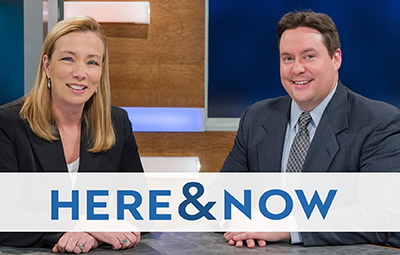
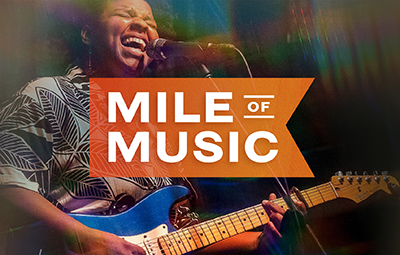
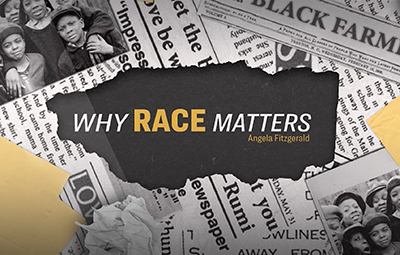
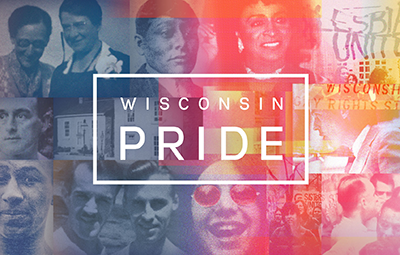
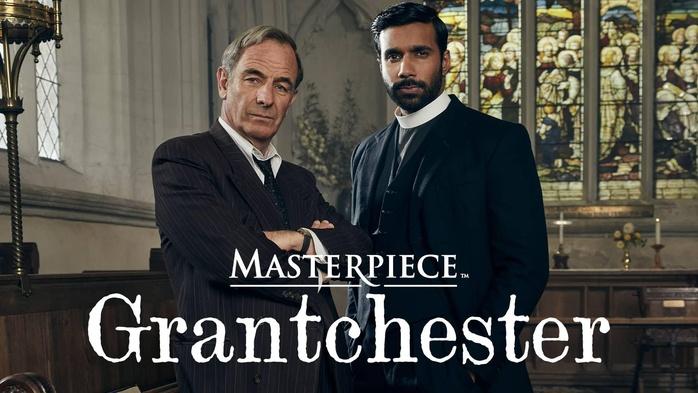


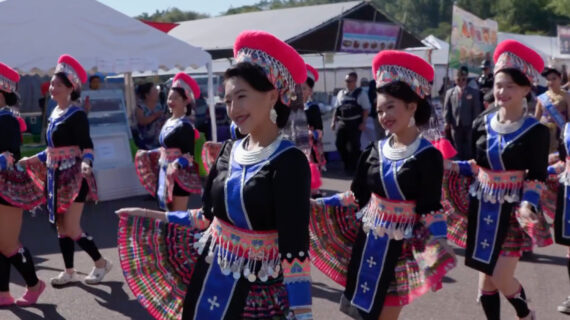
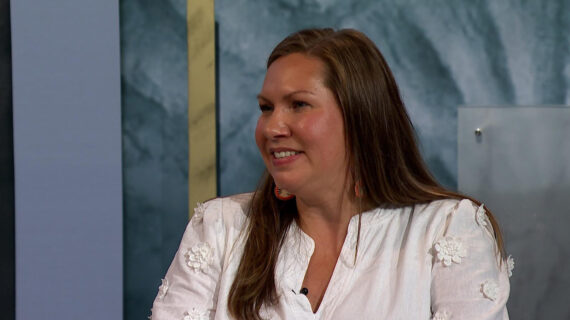
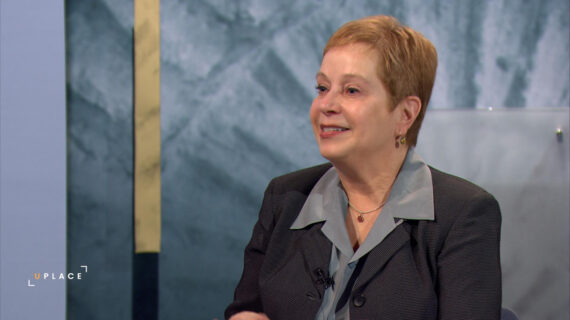
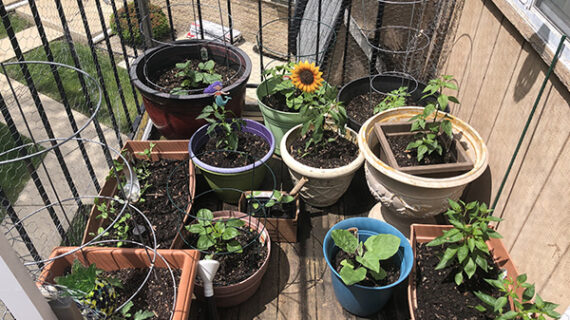
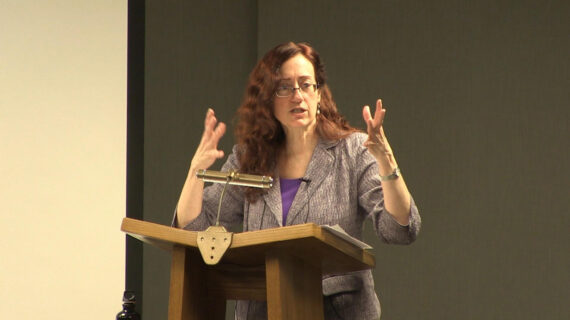
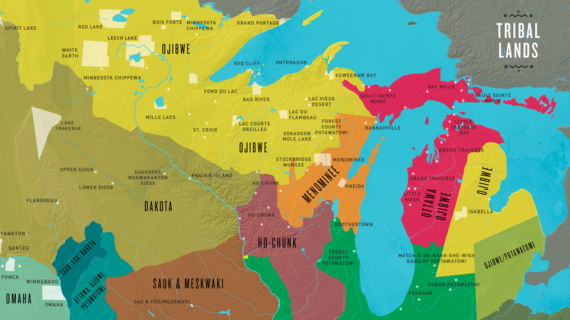
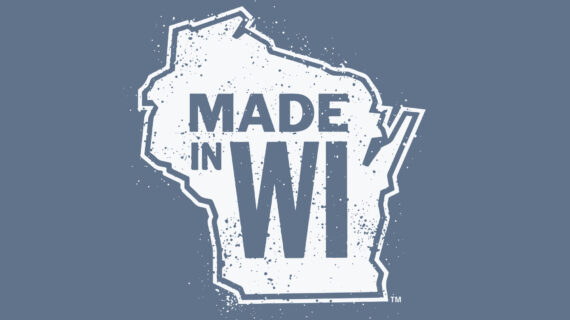
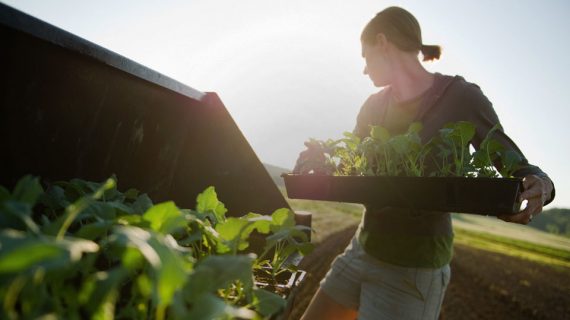
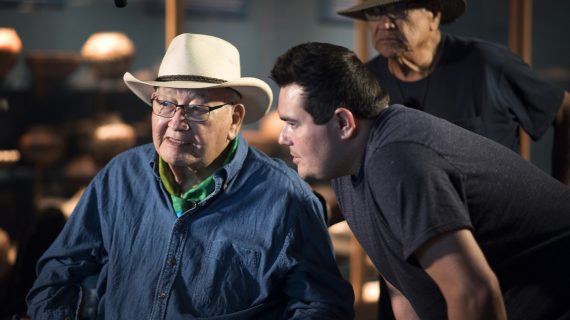

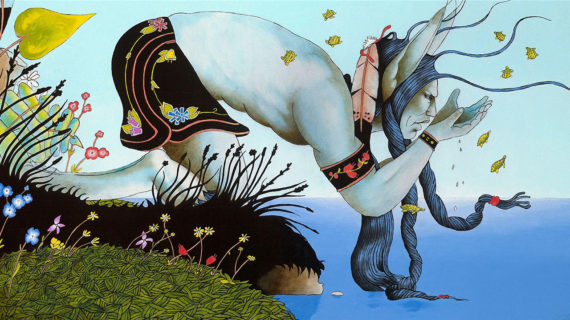

Follow Us